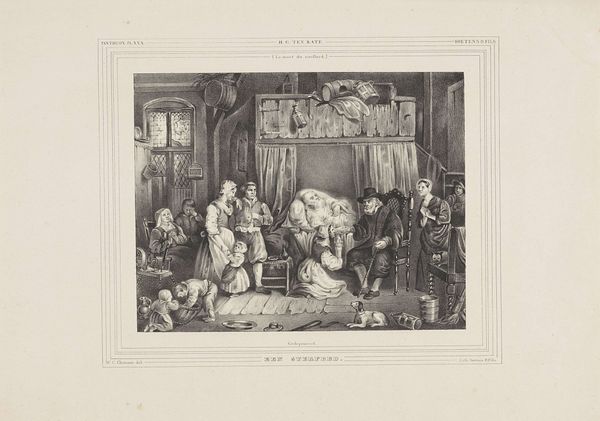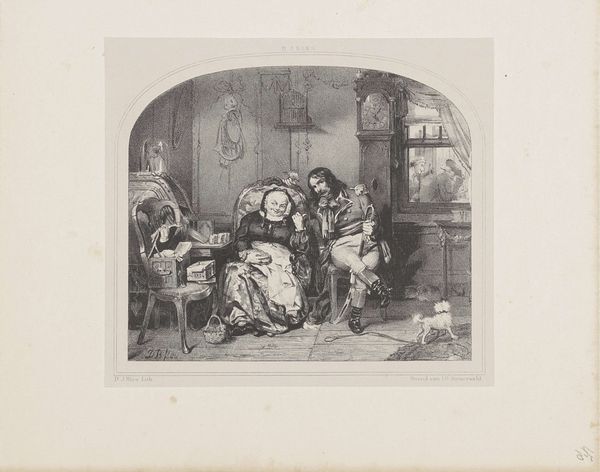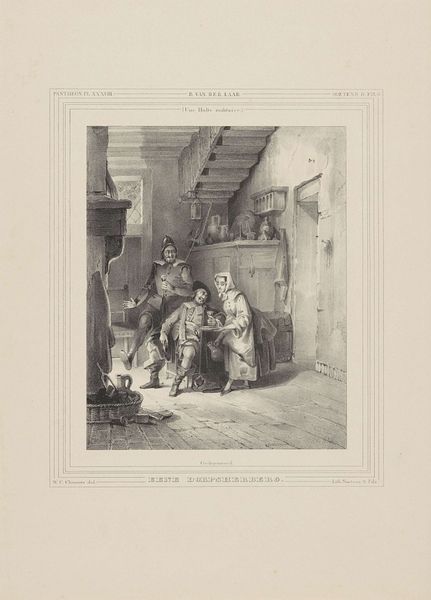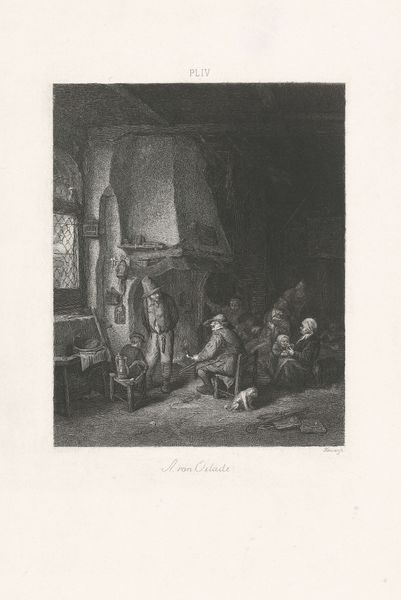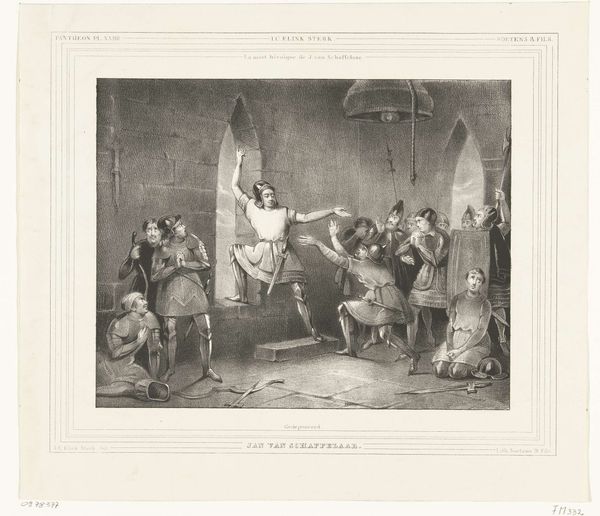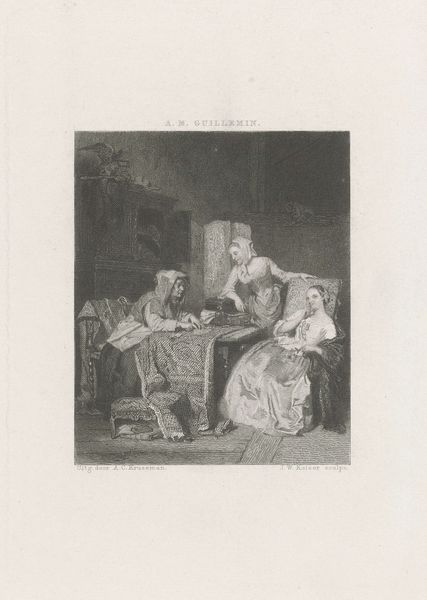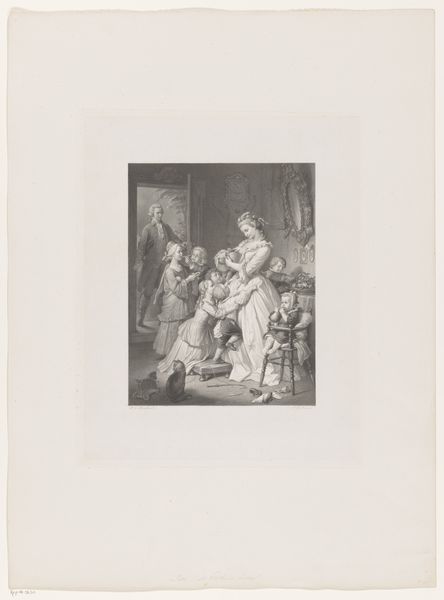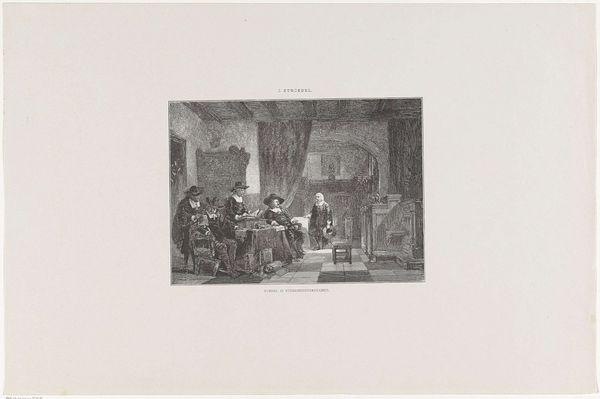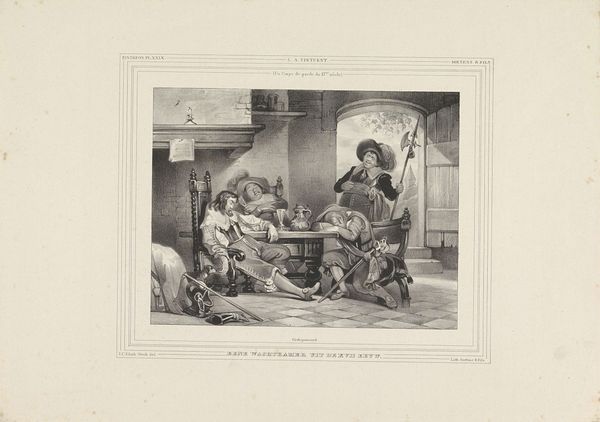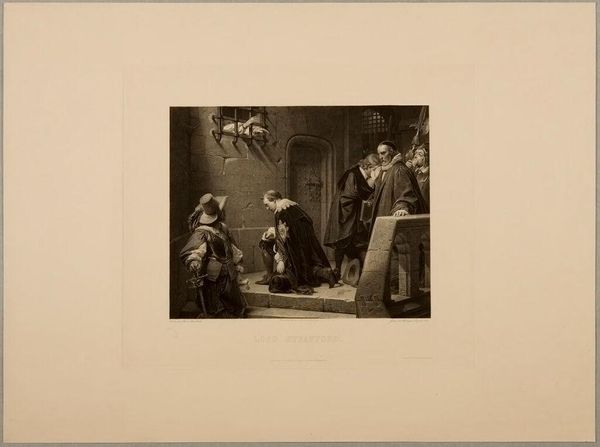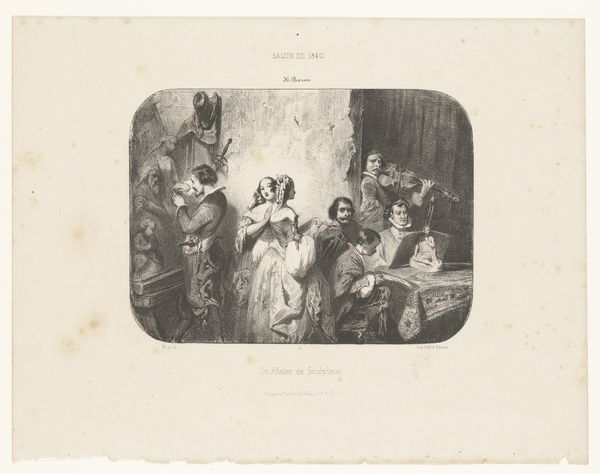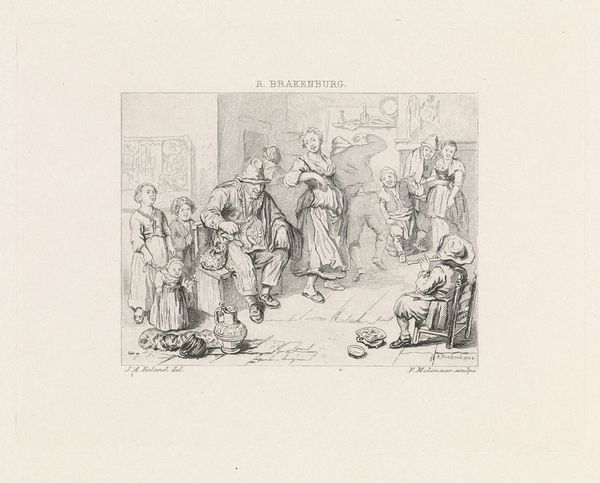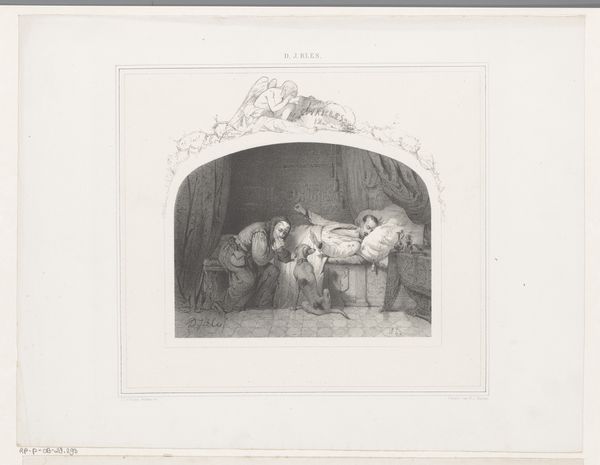
print, engraving
#
portrait
#
narrative-art
# print
#
figuration
#
pencil drawing
#
genre-painting
#
history-painting
#
academic-art
#
engraving
Dimensions: height 319 mm, width 431 mm
Copyright: Rijks Museum: Open Domain
Curator: I would analyze the political economy that made this image possible. This is J.B. Clermans' print, "Balthasar Gerards voor Maurits gebracht, 1584" created between 1826 and 1839. I am drawn to the details and storytelling aspect. What are your first impressions? Editor: It's very detailed. You see the opulence of the room depicted but its reproduction is an engraving which is relatively more reproducible. What should we make of the tension of these materials and image? Curator: Excellent point! Consider the socio-economic conditions: who had access to prints? This image reproduces and disseminates an historical account to the middle classes. It's academic art aiming for moral instruction but its reach expands beyond the elites because of the printmaking. Think about how the labour of the artist translates history through reproductive means. What labor was used to create this image, and for whose consumption? Editor: So the choice of engraving isn't just aesthetic, it’s about making the history accessible. Curator: Precisely! And how does the narrative being depicted impact or dictate those choices in materiality? Consider that historical paintings are commissioned and this reproductive print makes that visual history and ideology accessible in a different social class. The content promotes visibility. Editor: It's like the print medium democratizes the consumption of historical narratives. I didn't consider the economics of printmaking before, that's really interesting. Thanks for expanding my understanding of materiality! Curator: Absolutely. Examining the process unveils hidden social contexts. It reveals class and how it defines artistic production.
Comments
No comments
Be the first to comment and join the conversation on the ultimate creative platform.
